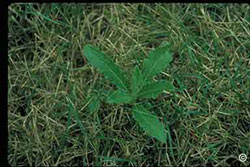What is Canada Thistle?
 Canada thistle, a noxious weed common in Colorado, is an aggressive and creeping perennial that spreads from its root system. Shoots become 1 to 3 feet tall and its purple flowers are about the size of a dime. It can also be recognized by its spiny leaves and stems. What seeds it does produce can remain viable for up to 20 years, so removing buds and flowers can help reduce future weed impacts.
Canada thistle, a noxious weed common in Colorado, is an aggressive and creeping perennial that spreads from its root system. Shoots become 1 to 3 feet tall and its purple flowers are about the size of a dime. It can also be recognized by its spiny leaves and stems. What seeds it does produce can remain viable for up to 20 years, so removing buds and flowers can help reduce future weed impacts.
Is hand pulling an effective way to reduce Canada Thistle?
Hand pulling Canada thistle is an effective control over several years if practiced persistently. It is necessary to pull or cut the plant as soon as it emerges before the leaves can supply nutrients into the root system. Canada Thistle is easily outcompeted by other plants so overseeding is an effective part of control.
Can I apply herbicide to Canada Thistle?
Systemic herbicides such as Round-up, 2,4-D, and related chemicals can be effective controls. Controlling Canada Thistle with herbicides may take several applications over several years. Fall applications are most effective. Use caution when using any herbicide near desirable plants. Follow label directions carefully.
To treat Canada thistle in a lawn, 2,4-D and related herbicides are preferred. Be sure to apply 2,4-D when temperatures are between 65 and 85 degrees Fahrenheit and when winds are less than 5 mph.
What can I use to treat Canada Thistle in flower beds?
In other areas, such as flower beds and vegetable gardens, Round-up, 2,4-D or related chemicals can be used. It’s important not to spray the foliage of desirable plants with these herbicides. Sponging or painting with an herbicide is best when Canada thistle and desirable plants are in close proximity.
For “Pesticides: disposal” refer to message number 1426.
For “Pesticides: safety” refer to message number 1429.
For more information, see the following Colorado State University Extension fact sheet(s).



